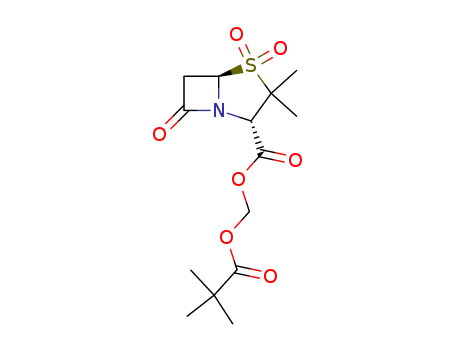| Toltrazuril Usage And Synthesis |
| Description |
Toltrazuril (Baycox®,Procox®) is a triazinon drug thathas broad-spectrum anticoccidial and antiprotozoalactivity. It is not commercially available in the UnitedStates, but it is available in other countries. It is activeagainst both asexual and sexual stages of coccidia byinhibiting nuclear division of schizonts and microga-monts and the wall-forming bodies of macrogamonts. Itmay also be useful in the treatment of neonatal porcinecoccidiosis, EPM, and canine hepatozoonosis.
Toltrazuril and its major metabolite ponazuril (toltrazuril sulfone, Marquis) are triazine-based antiprotozoal drugs that have specific activity against apicomplexan coccidial infections. Toltrazuril is not available within the United States. |
| Physical properties |
Toltrazuril is white or off-white color crystalline powder, and odorless is molten in the methanol part omitted at ethyl acetate, dichloromethane, Polyethylene Glycol, α-adjoin in the organic solvents such as pyrrolidone, propylene glycol and dissolve, and is insoluble in water. |
| Uses |
Toltrazuril is an antiprotozoal agent that is widely used to prevent coccidia parasite infection in veterinary applications. The effectiveness of treatment appears to depend on the coccidian species, development stage of the parasite, and level of infection. |
| Uses |
Labelled analog of a triazinetrione anticoccidial. Coccidiostat. Toltrazuril is found to be highly effective against coccidia and is used in controlling coccidiosis. It is acting against all intracellular development stages of coccidia of the merogony (asexual multiplication) and gamogony (sexual phase). All stages are destroyed, thus the mode of action is coccidiocidal. |
| Definition |
ChEBI: 1-methyl-3-[3-methyl-4-[4-(trifluoromethylthio)phenoxy]phenyl]-1,3,5-triazinane-2,4,6-trione is an aromatic ether. |
| benefits |
Toltrazuril is highly effective and has demonstrated the following benefits:-prevents and reduces the severity of lesions;-stops oocyst shedding;-improves growth rate;-improves feed conversion. |
| Clinical Use |
Swine: Toltrazuril has been shown to reduce the signs of coccidiosis in naturally infected nursing pigs when a single oral 20–30 mg/kg BWdose is given to 3 to 6-dayold pigs (Driesen et al., 1995). Clinical signs were reduced from 71 to 22% of nursing pigs, and diarrhea and oocyst excretion were also decreased by the single oral treatment. Approved products carry a 77-daywithdrawal time in the United Kingdom.
Calves and lambs: Toltrazuril is used for the prevention of clinical signs of coccidiosis and reduction of coccidia shedding in calves and lambs as a single dose treatment. Withdrawal times in the United Kingdom are 63 and 42 days for calves and lambs, respectively.
Dogs: For hepatozoonosis, toltrazuril given orally at 5 mg/kg BW every 12 hours for 5 days or given orally at 10 mg/kg BW every 12 hours for 10 days caused remission of clinical signs in naturally infected dogs in 2–3 days (Macintire et al., 2001). Unfortunately, most treated dogs relapsed and eventually died from hepatozoonosis. In puppies with Isospora sp. infection, treatment with 0.45 mg emodepside in combination with 9 mg/kg BW toltrazuril (Procox®, Bayer Animal Health) reduces fecal oocyst count by 91.5–100%. There was no difference in duration of diarrhea when treatment was begun after the onset of clinical signs during patent infection (Altreuther et al., 2011).
Cats: In kittens experimentally infected with Isospora spp., treatment with a single oral dose of 0.9 mg emodepside in combination with 18 mg/kg BW toltrazuril (Procox®, Bayer AnimalHealth) reduces oocyst shedding by 96.7–100% if given during the prepatent period (Petry et al., 2011).
Horses: Toltrazuril has also been used for the treatment of EPM. This drug is safe, even at high doses. Current recommended treatments are 5–10 mg/kg orally for 28 days. Despite the favorable efficacy with toltrazuril, its use has diminished in horses because of better availability of other effective drugs. |
| Veterinary Drugs and Treatments |
Toltrazuril is an antiprotozoal agent that may be considered as an alternative treatment for coccidiosis in dogs and cats, Hepatazoon infections, or for treating the oocyst shedding stage of toxoplasmosis in cats. It has also been used as a treatment for overwhelming parasitic loads in lizards (Bearded Dragons).
Toltrazuril has activity against parasites of the genus Hepatozoon, but other drugs (e.g., imidocarb, primaquine, doxycycline) are generally used.
While toltrazuril has been used to treat equine protozoal myeloencephalitis (EPM) caused by Sarcocystis neurona, use of approved products now available (e.g., nitazoxanide, ponazuril, pyrimethamine/ sulfadiazine) is preferred.
Toltrazuril has been used in some countries to treat Isospora suis in piglets. |
|


 Diamondsupplier
Diamondsupplier 




